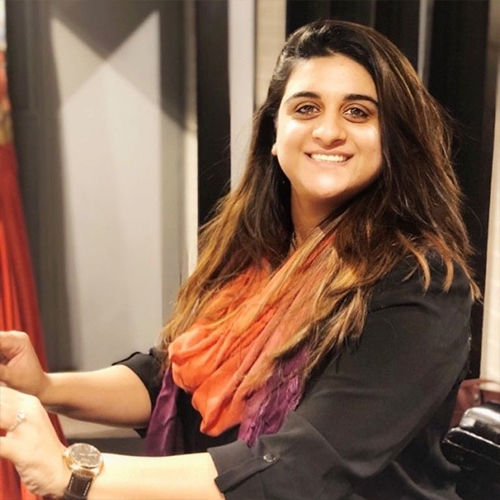Womenswear is seeing a shift to lots of glitter and glamour
The designer duo Vrinda Sachdev and Gurinder Singh launched their label Qbik in 2011 and since then have been garnering attention with their collections across the globe. The brand has always celebrated the multitude of crafts and the rich colour palette of India, translating them into various silhouettes to design garments for a more dynamic Indian. Co-founder Vrinda Sachdev speaks to Fibre2Fashion about the Indian fashion industry and fashion trends.
Fibre2Fashion: How has the Indian fashion industry evolved since you began in 2011 and in what ways?
Vrinda Sachdev:
It’s been only a decade in the industry, and it does feel that we have seen it all! From recession to COVID-19, to coming out of the pandemic, to now a recession again. Inflation currently is at its all-time high and now more than ever, making clothes that make sense and fit in a particular price bracket is becoming very tough. It feels like survival of the fittest.
The advancement towards sustainable methods of production is a good sign. It will take time because there are a lot of restrictions and shortcomings, but it’s a good step, nevertheless.
People have become smart buyers. Most of them have educated themselves to identify good workmanship and fabric quality. Most brands have managed to build their own niche in the industry.
Dependency on China has reduced and should only reduce further in the coming time. Of course, everything being made in India is expensive, but it generates employment and adds to the GDP of our own country and eventually the production cost of things will come down in the coming years. We will become more self-dependent.
F2F: What have been the biggest challenges when it comes to modernising traditional weaves?
VS:
I love Indian weaves, dyeing techniques and the vast options of crafts and skills our artisans and craftsmen have to offer. It’s been almost three years that I have been using some or the other weave or technique in my collection. I feel fusion of modern expectations with ethnic craftsmanship comes naturally to me. Juxtaposing vibes, colours and elements from different time zones and parts of the country to make an outfit or an accessory that looks cohesive or meant to be together is something that Qbik has made its mark in.
Apart from what I can do with all the weaves that our country has to offer, the main challenge is demand and supply. When a designer label makes a collection around a craft or two, many creative heads and mediums come together to promote it and then sell it. Now after all this, when the weaver or the craftsman doesn’t come through with orders or delays production because of some or the other shortcoming, it becomes very difficult to keep up with the demand created.
F2F: Do you see the market improving and demand rising to pre-COVID levels?
VS:
In 2021, we experienced massive revenge buying. Deep down, we knew this is not normal market behaviour. But we obviously tried our best to fulfil the demand and make up for lost resources. The market will take a bit to really come back to normal. The current inflation rate has brought the world face to face with recession once again after a decade. It’s important to make the right moves. We also know clients and competition are expecting huge collections, fancy shoots, events, aggressive promotions, etc after two years of COVID, but all this investment is not going to be easy.
F2F: What needs to be done to put Indian fashion at par with French or American fashion?
VS:
Sticking to our roots and our originality. Having a story that is heard and felt. We weave, handcraft, hand embroider, dye, that’s our forte. Our colours are rich, fabric is beautiful, craftsmen are skilled. The need to support and reinstall these factors and most importantly the quality of our creations is not something that hasn’t been done in the past, but owning it is essential.
F2F: Which are your major markets in India and abroad?
VS:
Our major markets in India, apart from Delhi and Mumbai, are two tier cities like Nagpur, Surat, Indore, Agra, Karnal, Ludhiana, Guwahati, and Raipur.
Internationally, we do well in London, Bangkok, New York, LA, Houston and other parts of Texas.
F2F: Which clothing categories are performing well?
VS:
In womenswear, a crowd favourite category is our drapes and stitched sarees.
In menswear, our grooms wear does super well.
F2F: What is your sales percentage from stores, online and marketplaces annually?
VS:
Our retail sale from both our flagship stores in Delhi make for 70 per cent of our sales. Online is about 7 per cent. Other multi-brand outlets generate about 23 per cent of our total sales annually.
F2F: What are the biggest trends in Indian wear and Western wear for men and women?
VS:
This year, womenswear is seeing a shift to lots of glitter and glamour.
I feel western wear for men will be in the limelight this season. Superb fabrics, tone-on-tone glittery embroideries on jackets and great fits as always.
F2F: What new can be expected at Qbik in the years to come?
VS:
A stronger brand identity, more flagship stores in other metropolises, and more global presence.



20230103183907.png)









_8.JPG)
